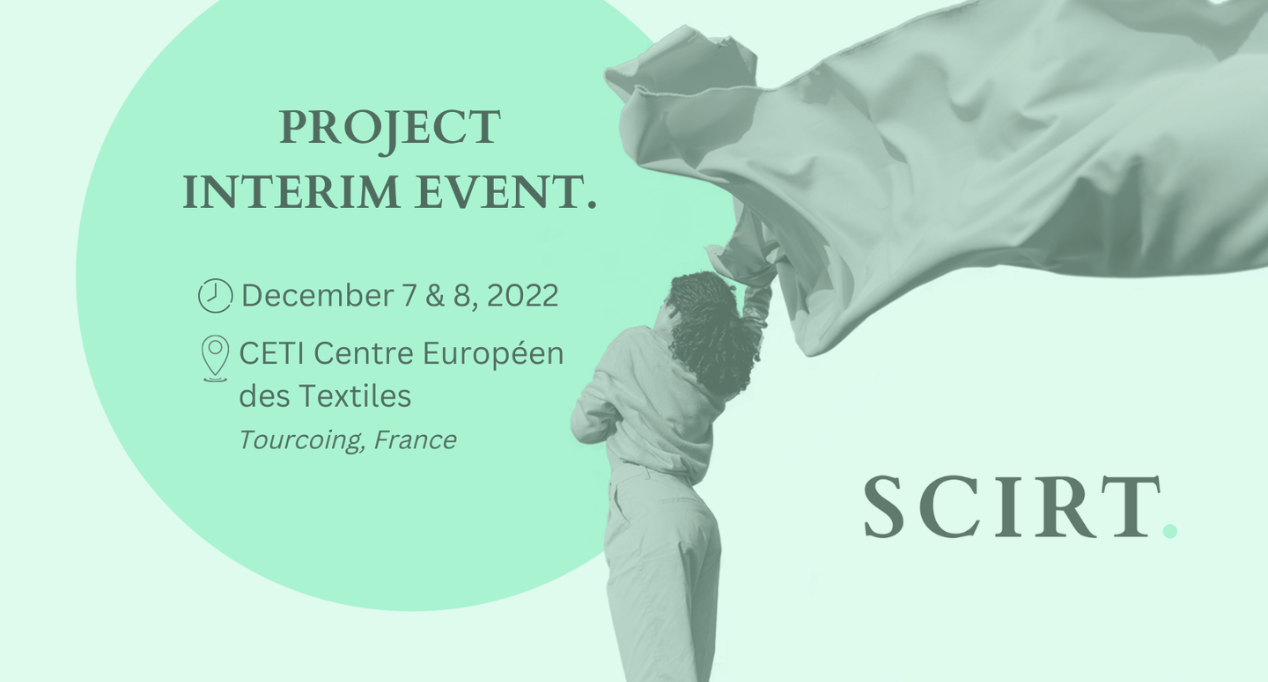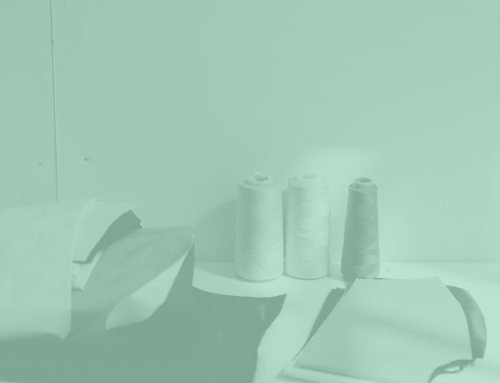On 7 and 8 December 2022, the SCIRT project held its interim event at project partner CETI’s premises in Tourcoing.
In total, 80 participants gathered to get a first glimpse of the project’s results so far. Moreover, project partners Valvan and CETI opened their doors and showed the participants all about the newest developments in the field of respectively automatic sorting and recycling of textiles.
Where we are today in SCIRT
After one and a half year into our project, SCIRT has taken a number of important steps towards its final objective. We have sketched out the current state of the art of textile recycling, performed a visioning exercise to determine the key elements considered essential to reach certain goals and system changes towards 2050, first citizen labs were held and we have taken first steps towards our true cost methodology.
Another important element has been the outlining of the demo cases the SCIRT project will showcase. For the five brands, six demonstrator garments were described and key specifications were defined as baseline for the recycling trials. These recycling trials have been the focus of the SCIRT activities over the past months. Different recycling routes were tested on a lab and pilot scale tests: mechanical, thermo-mechanical and enzymatic recycling. The status today shows that:
- the maximum recycled content achieved today, while respecting the quality requirements and specifications as defined, is 80% for mechanically recycled cotton;
- knittability of the finest yarn (Nm60) is possible up to 40% recyclable content;
- an accurate detection method for elastane in textiles was developed. First tests on removing elastane while keeping polyester and polyamide intact seems promising;
- enzymatic hydrolysis can successfully recover polyamide or polyester from blends with wool or viscose, while the enzymes can be successfully reused for at least five cycles. The upcycling of the recovered monomers (glucose, amino acids) into other valuable compounds that might be re-integrated into textile industry is ongoing;
- trials using post-consumer multi-component textiles show additional challenges for quality of fibres. For example, in the case of wool-polyester recycling the increased contaminations cause technical difficulties in the machinery.
In parallel, a new Fibersort™ with automatic feeding system with robot picker was developed. The Fibersort™ identifies and separates textiles based on fibre and colour-composition. The automatic feeding system lowers the operational costs as it can run multiple shifts without adding extra labour costs, contributing to an economically feasible recycling system.
In the next period of SCIRT, further improvement of the recycled fibres will be done and partners will focus on the industrial upscaling of the recycling. Developments in the automatic sorting will continue, with an emphasis on integrating circularity.ID technology and dismantling steps. The integration of elements for the true cost methodology will continue, focusing more on the social and economic aspects.
If you want to follow what we are doing and the results we achieve, make sure to register for our newsletter.
Key take-aways of the event
- Circularity is a means, not an end! Taking an holistic approach is essential: looking at the overall sustainability performance of the system can avoid unsustainable results, for example through rebound effects or greenwashing, while making sustainability driven choices.
- A circular fashion system is not the same as a recycling system! The SCIRT project might target recycling in particular as a strategy to closing the material cycle, the first step towards a more sustainable fashion system remains slowing down the loop by extending the useful lifetime of a product. Closing the loop through recycling becomes key at the end of life of a product, hopefully after extensive use and reuse.
- Design of a garment is crucial for longevity and durability, but also for recyclability. However, recycling trials in SCIRT show that design choices for durability might in some cases negatively impact its recyclability at end of life. This shows the need for thought-through choices to be made from the design stage on, in line with the type of garment and use envisaged throughout its lifecycle. Sustainable design guidelines might therefor best distinguish between different product groups.
- Automated (cost-efficient) and accurate sorting and dismantling form an important lever for closing the loop for high-quality fibre-to-fibre recycling. Current technological developments, as showcased during the event, are promising, but supporting policy interventions such as broadly implemented eco-modulated extended producer responsibility schemes, eco-design standards (taking quality into account) or a mandatory use of recycled content for specific product groups are deemed crucial.
- Value chain collaboration is essential, where the digital product passport could serve as a connector; information can travel with the garment throughout its lifecycle and make sorting for reuse and recycling a whole lot easier. Increased transparency, collaboration and communication will have to be pursued in order to make this work: what should the passport contain, how will the system be integrated in the garment, how should sorting facilities integrate this and so on. SCIRT will start trials on integrating the circularity.ID into the Fibresort technology early 2023.
- Pre-liminary results of the Citizen Labs organized in Belgium and France show that next to price and design as being the most important factors for purchasing clothes, consumers are generally afraid of greenwashing. Transparency is considered key for clothes made from recycled fibres. The True Cost of a garment which quantifies all the environmental and social costs and which is being developed within SCIRT, could tap into this potential. This could moreover create a greater awareness about where and under which (working) conditions garments are produced.
If you were unable to attend the meeting but wish to access the slides from the event, contact us at contact@scirt.eu.





